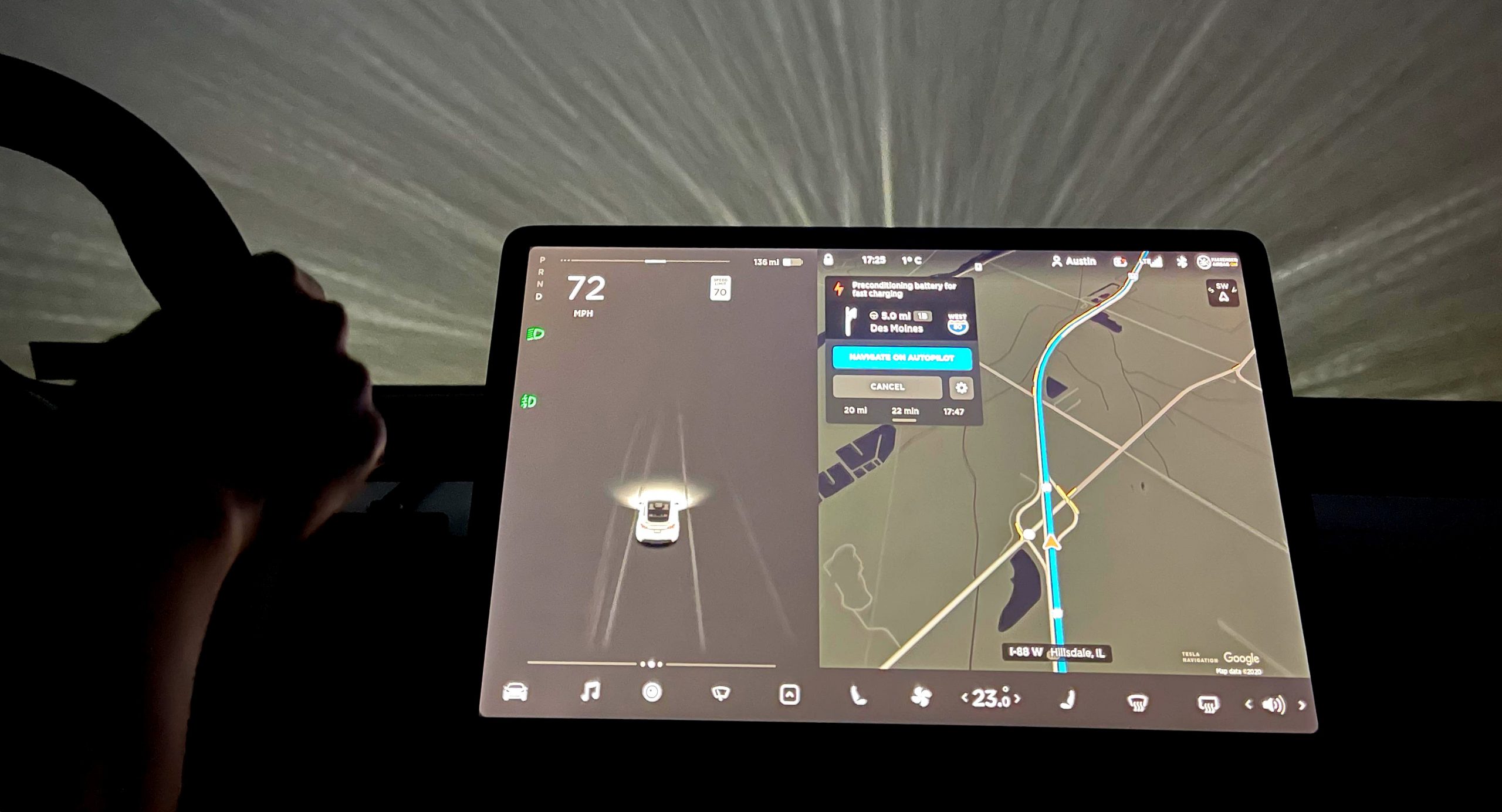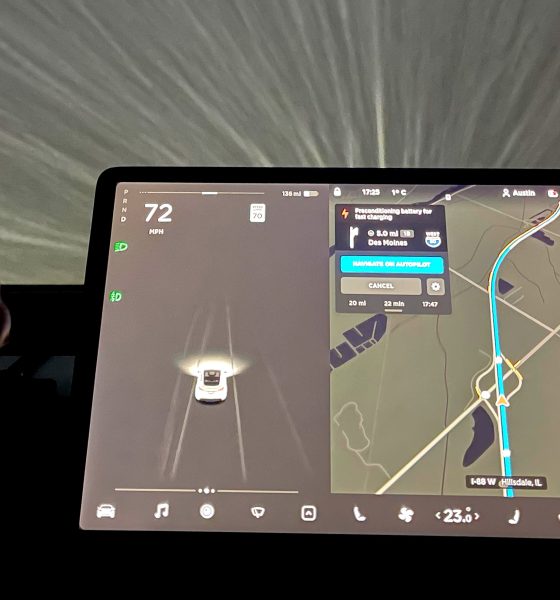Considering Tesla’s history and Elon Musk’s celebrity status, it is no surprise that every update from the electric car maker results in some degree of scrutiny. And as the number of Tesla owners continues to grow, the amount of scrutiny towards the company has also increased. This became quite notable as Tesla rolled out this year’s Holiday Update.
This year’s Holiday Update featured changes to the vehicles’ driving visualizations, new games like Polytopia, and fun features like Boombox. Needless to say, these updates attracted some degree of criticism. This was quite evident especially among a number of longtime owners, some of whom rejected Elon Musk’s efforts to promote Tesla’s new entertainment features.
While criticisms about this year’s Holiday Update are legitimate to a point, it should be noted that a lot of Tesla’s updates usually end up being extremely useful down the road. This was something that was mentioned by Elon Musk on Twitter when he stated that ultimately, entertainment features will be critical in a market where self-driving vehicles are the norm.
Such statements may sound like typical Musk future-speak, but the CEO has a point. Regardless of one’s stance on Tesla’s full self-driving strategy, the fact remains that the company’s driver-assist features are rapidly advancing. This was exhibited recently when the FSD beta was able to complete a zero-intervention trip down Lombard Street just over a month after it was humbled sorely by the extremely crooked road. Recent updates from members of the limited FSD beta also show that the advanced driver-assist system is behaving more and more humanlike.
It should be noted that Tesla’s FSD beta has only been deployed on public roads for a couple of months. And while its release is very limited for now, the system itself has been improving rapidly. There’s a fair chance that FSD will achieve true hands-free driving at a time later than Elon Musk’s optimistic estimates, but there is hardly any doubt that autonomous driving will happen.
Assuming that Tesla’s FSD software does reach its potential, then the company would offer a vehicle ownership experience that is unlike anything on the market. In such a scenario, entertainment features as predicted by Elon Musk would definitely be critical. Once cars drive themselves, after all, passengers would require something to ease their boredom. Games, video streaming, and other entertainment features would definitely be a good way to achieve such a goal.
This is something that very few carmakers today seem to be exploring. Even companies like Lucid Motors, which is also working on an advanced driver-assist system for the Air, has its displays set up quite similarly to a conventional car. The same is true for the Ford Mustang Mach-E, whose vertical display will likely be just as optimized for media consumption as the infotainment system of the Model S and Model X today.
There is no doubt that the infotainment systems in the Air and the Mach-E will be amazing for the near term. But for a time when autonomous cars are the norm and people are used to being driven around by full self-driving vehicles, a passenger riding in a humble Model 3 would likely be more engaged than one riding in Ford’s crossover.
This is understandable. Predicting what will be valuable to a market that is yet to exist is very tricky. Fortunately for Tesla, Elon Musk appears to have a knack for predicting just what the market will need a decade or so down the road. With this in mind, Tesla’s apparent entertainment-laden 2020 Holiday Update may end up being part of the groundwork for something valuable after all.
Don’t hesitate to contact us for news tips. Just send a message to tips@teslarati.com to give us a heads up.

News
Elon Musk’s Grokipedia surges to 5.6M articles, almost 79% of English Wikipedia
The explosive growth marks a major milestone for the AI-powered online encyclopedia, which was launched by Elon Musk’s xAI just months ago.

Elon Musk’s Grokipedia has grown to an impressive 5,615,201 articles as of today, closing in on 79% of the English Wikipedia’s current total of 7,119,376 articles.
The explosive growth marks a major milestone for the AI-powered online encyclopedia, which was launched by Elon Musk’s xAI just months ago. Needless to say, it would only be a matter of time before Grokipedia exceeds English Wikipedia in sheer volume.
Grokipedia’s rapid growth
xAI’s vision for Grokipedia emphasizes neutrality, while Grok’s reasoning capabilities allow for fast drafting and fact-checking. When Elon Musk announced the initiative in late September 2025, he noted that Grokipedia would be an improvement to Wikipedia because it would be designed to avoid bias.
At the time, Musk noted that Grokipedia “is a necessary step towards the xAI goal of understanding the Universe.”
Grokipedia was launched in late October, and while xAI was careful to list it only as Version 0.1 at the time, the online encyclopedia immediately earned praise. Wikipedia co-founder Larry Sanger highlighted the project’s innovative approach, noting how it leverages AI to fill knowledge gaps and enable rapid updates. Netizens also observed how Grokipedia tends to present articles in a more objective manner compared to Wikipedia, which is edited by humans.
Elon Musk’s ambitious plans
With 5,615,201 total articles, Grokipedia has now grown to almost 79% of English Wikipedia’s article base. This is incredibly quick, though Grokipedia remains text-only for now. xAI, for its part, has now updated the online encyclopedia’s iteration to v0.2.
Elon Musk has shared bold ideas for Grokipedia, including sending a record of the entire knowledge base to space as part of xAI’s mission to preserve and expand human understanding. At some point, Musk stated that Grokipedia will be renamed to Encyclopedia Galactica, and it will be sent to the cosmos.
“When Grokipedia is good enough (long way to go), we will change the name to Encyclopedia Galactica. It will be an open source distillation of all knowledge, including audio, images and video. Join xAI to help build the sci-fi version of the Library of Alexandria!” Musk wrote, adding in a later post that “Copies will be etched in stone and sent to the Moon, Mars and beyond. This time, it will not be lost.”
News
Tesla Model 3 becomes Netherlands’ best-selling used EV in 2025
More than one in ten second-hand electric cars sold in the country last year was a Tesla Model 3.

The Tesla Model 3 became the most popular used electric car in the Netherlands in 2025, cementing its dominance well beyond the country’s new-car market.
After years at the top of Dutch EV sales charts, the Model 3 now leads the country’s second-hand EV market by a wide margin, as record used-car purchases pushed electric vehicles further into the mainstream.
Model 3 takes a commanding lead
The Netherlands recorded more than 2.1 million used car sales last year, the highest level on record. Of those, roughly 4.8%, or about 102,000 vehicles, were electric. Within that growing segment, the Tesla Model 3 stood far ahead of its competitors.
In 2025 alone, 11,338 used Model 3s changed hands, giving the car an 11.1% share of the country’s entire used EV market. That means more than one in ten second-hand electric cars sold in the country last year was a Tesla Model 3, Auto Week Netherlands reported. The scale of its lead is striking: the gap between the Model 3 and the second-place finisher, the Volkswagen ID3, is more than 6,700 vehicles.
Rivals trail as residual values shape rankings
The Volkswagen ID.3 ranked a distant second, with 4,595 used units sold and a 4.5% market share. Close behind was the Audi e-tron, which placed third with 4,236 registrations. As noted by Auto Week Netherlands, relatively low residual values likely boosted the e-tron’s appeal in the used market, despite its higher original price.
Other strong performers included the Kia Niro, the Tesla Model Y, and the Hyundai Kona, highlighting continued demand for compact and midsize electric vehicles with proven range and reliability. No other model, however, came close to matching the Model 3’s scale or market presence.
News
Tesla Model Y Standard Long Range RWD launches in Europe
The update was announced by Tesla Europe & Middle East in a post on its official social media account on X.

Tesla has expanded the Model Y lineup in Europe with the introduction of the Standard Long Range RWD variant, which offers an impressive 657 km of WLTP range.
The update was announced by Tesla Europe & Middle East in a post on its official social media account on X.
Model Y Standard Long Range RWD Details
Tesla Europe & Middle East highlighted some of the Model Y Standard Long Range RWD’s most notable specs, from its 657 km of WLTP range to its 2,118 liters of cargo volume. More importantly, Tesla also noted that the newly released variant only consumes 12.7 kWh per 100 km, making it the most efficient Model Y to date.
The Model Y Standard provides a lower entry point for consumers who wish to enter the Tesla ecosystem at the lowest possible price. While the Model 3 Standard is still more affordable, some consumers might prefer the Model Y Standard due to its larger size and crossover form factor. The fact that the Model Y Standard is equipped with Tesla’s AI4 computer also makes it ready for FSD’s eventual rollout to the region.
Top Gear’s Model Y Standard review
Top Gear‘s recent review of the Tesla Model Y Standard highlighted some of the vehicle’s most notable features, such as its impressive real-world range, stellar infotainment system, and spacious interior. As per the publication, the Model Y Standard still retains a lot of what makes Tesla’s vehicles well-rounded, even if it’s been equipped with a simplified interior.
Top Gear compared the Model Y Standard to its rivals in the same segment. “The introduction of the Standard trim brings the Model Y in line with the entry price of most of its closest competition. In fact, it’s actually cheaper than a Peugeot e-3008 and costs £5k less than an entry-level Audi Q4 e-tron. It also makes the Ford Mustang Mach-E look a little short with its higher entry price and worse range,” the publication wrote.










